4ms QCD Expander Handleiding
4ms
Niet gecategoriseerd
QCD Expander
Bekijk gratis de handleiding van 4ms QCD Expander (8 pagina’s), behorend tot de categorie Niet gecategoriseerd. Deze gids werd als nuttig beoordeeld door 35 mensen en kreeg gemiddeld 4.3 sterren uit 18 reviews. Heb je een vraag over 4ms QCD Expander of wil je andere gebruikers van dit product iets vragen? Stel een vraag
Pagina 1/8

QCD Expander
from 4ms Company
Eurorack Module User Manual
The QCD Expander from 4ms Company is an expansion module for the Quad Clock Distributor (QCD). The QCD
Expander requires the QCD to function, and adds a host of features. The Expander turns the QCD into a
programmatic non-linear sequencer, easily obtaining self-patched evolving rhythms, and swing/shuffle patterns.
Each of the four channels has:
•Multi-mode output jack INV OUT mirrors the tempo of main QCD output
•Mode Switch for each INV OUT jack:
◦Delayed Trigger Mode
◦Inverted Gate Mode
◦Shuffle Mode (delayed + original trigger)
•PW/Delay knob controls trigger delay time on INV OUT jack (or pulse width in Inverted Gate Mode)
◦Also controls Pulse Width of main QCD OUT jack
◦CV input jack for external control
◦Attenuverter allows for one channel to precisely modulate another channel's delay or pulse width
•Div/Mult CV attenuator knob
◦Controls how much the signal on the main QCD's Div/Mult CV jack will modulate the tempo
◦Useful for precisely modulating the speed of one channel with another
A global LED brightness trimpot is accessible from the front panel.
DOWNLOAD MOST RECENT MANUAL AT:
http://4mspedals.com/qcd.php

Basic features:
•Connects to QCD module with a 16-conductor ribbon cable (included)
•When connected to a QCD, the following features are added to each QCD channel:
◦Multi-mode clock output (INV OUT) is the same tempo as the QCD's OUT jack
◦Switch for selecting mode of the INV OUT jack:
▪Delayed Trigger mode (left)
▪Inverted Gate mode (center)
▪Shuffle mode = delayed + original trigger (right)
◦Knob for controlling amount of trigger delay, as well as pulse width of the main QCD output
◦CV jack for controlling trigger delay and pulse width using another channel or external CV
◦Attenuverter knob for Gate PW/Trig Delay CV jack (controls the amount the signal on the jack effects the
PW/Delay)
◦Attenuverter knob for Div/Mult CV jack (on the main QCD module)
•LED brightness can be adjusted from the front panel
Controls and jacks:
•INV OUT jack (each channel)
•+5V trigger (10ms) or +5V gate output. See Mode Switch, below
•Runs at the same Div/Mult tempo as the main QCD output, but may be delayed, inverted and/or shuffled.
•Three-position Mode Switch (each channel)
•Only effects the INV OUT jack on the Expander (no effect on the main QCD output)
•Left = Delayed Trigger mode
•Center = Inverted Gate mode
•Right = Shuffle mode (delayed + undelayed), effectively doubles the tempo
•Trigger Delay (Pulse Width) big knob, attenuverter, and jack:
•Depending on the Mode Switch, either trigger delay time or pulse width is controlled
•Pulse width of the main QCD output is effected (no matter what mode the expander is in)always
•The big knob sets the amount of delay time or pulse width
•The signal on the CV jack is variably attenuated and/or inverted using the attenuverter
•The attenuverted CV and big knob's setting are added together
•Attenuverter for Div/Mult CV
•Variably attenuates and/or inverts the signal on the Div/Mult CV jack on the main QCD module
•LED dimmer
•The small hole at the bottom is for adjusting the LED brightness. A tiny phillips screwdriver can be inserted
through the panel to adjust the brightness. See section later in the manual for details
Specifications
•12 HP Eurorack format module
•0.98” (25 mm) maximum depth
•+12V rail: 44mA max, not used, 30mA max+5V rail -12V rail:

Connecting to the QCD
First, remove all the jumpers from the QCD's
"EXPANDER" header. Save these jumpers
with your QCD box and manual in the bag
provided with the QCD. You may wish to use
small needle-nose pliers to remove the
jumpers if you can't remove them with your
fingers.
Second, connect the QCD and QCD
Expander together using the 16-conductor
ribbon cable provided. One end plugs into
the "EXPANDER" header on the QCD, and
the other end plugs into the "TO QCD"
header on the QCD Expander. Make sure
the red stripe points down on both modules.
Now connect both modules to your power
rails, and power up. Tap a tempo on the
QCD, and the lights on the QCD Expander
should blink in time and change rate when
you turn the QCD's Div/Mult pot. Also, the
main QCD's lights should react to adjusting
the Gate PW knob on the Expander.
Note: The ribbon cable that connects the
QCD and QCD Expander is a standard
Doepfer/Eurorack power cable. In case you
lose or misplace the cable, or need a
different length, you can use a standard 16-
to-16pin Eurorack power cable.
About Attenuverters
“Attenuverter” is short for “attenuating inverter”. These knobs take the signal on the CV
jack and control how much of this signal will effect the parameter. They also can invert the
CV signal, meaning that a positive CV signal creates a negative effect (and vice-versa).
On the QCD and Expander, the two parameters with CV jacks and attenuverters are
Div/Mult and Gate PW/Trig Delay. The CV jack for Div/Mult is located on the main QCD
module, and the CV jack for PW/Delay is located on the Expander module. Both
attenuverters are located on the Expander.
When the attenuverter knob is turned to the center, the CV jack will have no effect on the
parameter. The knob has a slight detent at center, so this position can be easily found by
feel.
Turning the knob slightly to the right means that a positive signal on the CV jack will
increase the parameter slightly (for example, Div/Mult might sweep from “=” to x2). At fully
clock-wise, a 5V signal will sweep the parameter from half-way to maximum (for example Div/Mult would sweep from “=” to
x16). A 10V signal will sweep the parameter from minimum to maximum (/32 to x16).
Turning the knob slightly to the left means a positive signal will the parameter slightly (for example, Div/Mult might decrease
sweep from “=” to /2). At fully counter-clockwise, a 5V signal will sweep from half-way to minimum (e.g. “=” to /32).
When patching one QCD channel into another's Div/Mult CV jack, the channel will switch between two tempos. The first
tempo is set by the main Div/Mult knob. The second tempo is set by the Div/Mult CV attenuator. Turning the attenuator to the
right means the second tempo will be faster than the first. Turning the attenuator to the left means it'll be slower.
Making Rhythms
The QCD Expander and QCD are designed to create an infinite variety of rhythms that can be programmatically built, as
opposed to linearly "grid" sequenced. This is a form of non-linear sequencing. Using a few short patch cables, you can create
complex rhythmic patterns for multiple voices/drums.
The basic concept is to use the channels to modulate each other:
•Modulate a channel's Div/Mult amount with another channel. Use the Div/Mult CV attenuator knob to fine-tune.
•Modulate a channel's Trig Delay amount with another channel. Use the PW/Delay CV attenuator knob to fine-tune.
•Reset a faster channel with a slower channel.
•Use one channel to route other channels, using an external module such as a switch or VCA Matrix.
•Clock a channel with a dynamically changing channel to introduce clock tracking lag
Typically, the modulated channel will be faster than the modulating channel. For example, one channel might run at p3-x2 and
the second channel running at /4 could modulate the first channel's Div/Mult between p3-x2 and x3.
In the examples below, some references to drums (kick/snare/hats/etc) will be made. This is only to make
use of a common musical language and the relative tempos/spaces these drums traditionally fill in music.
That is, you don't actually need to imitate a particular type of acoustic instrument to enjoy the QCD! It's
great practice to Async trigger a PEG channel, or Reset trigger a QPLFO channel, or trigger an ADSR, and
use those shapes to modulate filters, VCOs, VCAs, wavetables, etc...
Product specificaties
| Merk: | 4ms |
| Categorie: | Niet gecategoriseerd |
| Model: | QCD Expander |
Heb je hulp nodig?
Als je hulp nodig hebt met 4ms QCD Expander stel dan hieronder een vraag en andere gebruikers zullen je antwoorden
Handleiding Niet gecategoriseerd 4ms
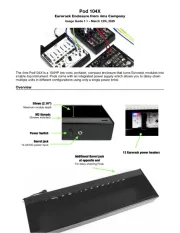
2 Augustus 2025

4 Mei 2024

3 Augustus 2023

3 Augustus 2023

24 Juni 2023

16 Juni 2023

16 Juni 2023

2 Juni 2023

19 Mei 2023

15 Mei 2023
Handleiding Niet gecategoriseerd
- IsoAcoustics
- BikeLogger
- Ilford
- Tiny Love
- Now TV
- Prenatal
- Hovicon
- I-Tec
- Katadyn
- Bēm Wireless
- Corberó
- Iseki
- Plantiflor
- Mars Gaming
- Multibrackets
Nieuwste handleidingen voor Niet gecategoriseerd
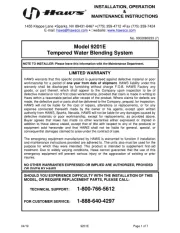
16 September 2025
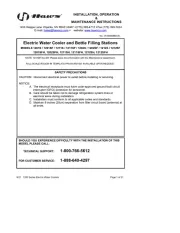
16 September 2025
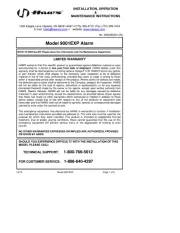
16 September 2025

16 September 2025
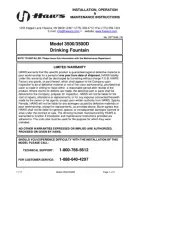
16 September 2025
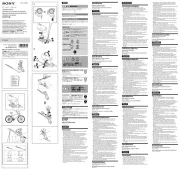
16 September 2025
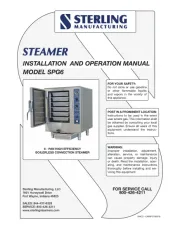
16 September 2025
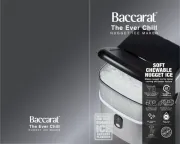
16 September 2025
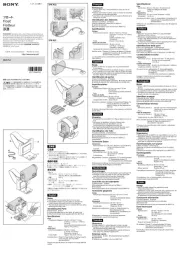
16 September 2025
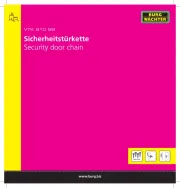
16 September 2025